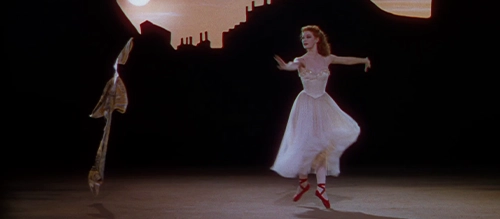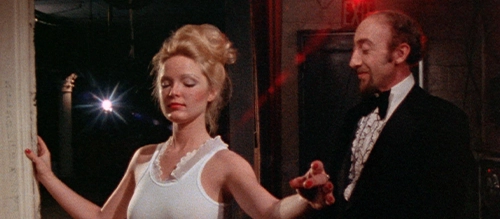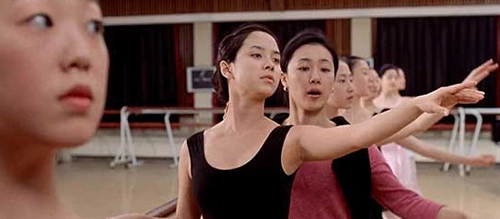10 Films Where Ballet and Horror Dance Together
3. The Red Shoes (1948)

It is a universal truth of film criticism that any article addressing dance on screen must include a reference to Powell and Pressburger’s remarkable The Red Shoes. And although there’s no realm in which one could successfully argue that it’s a horror film (even if P&P did have it in their locker, as seen in Black Narcissus and Peeping Tom), its influence on the genre and other films in this list is palpable.
The film’s linchpin scene, in which we see Moira Shearer’s star-in-the-making Victoria Page dance a stage adaptation of Hans Christian Andersen’s titular fairy tale, may be some of cinema history’s finest 16 minutes; a shape-shifting, psychedelic feast of movement and storytelling that serves both to dazzle and bear witness to the dancer’s impossible choice between vocational obsession and human love.
But it’s in the final few minutes that the directing team presents the most chilling image of the picture. While Page lies dying on the train tracks – the only escape from the entrapment symbolised by her ever-clinging ruby footwear – the show, it is decided, must go on. A melancholic oboe strikes up the ballet’s opening chords, while a figureless spotlight drifts across the stage in time to the choreography, ultimately landing on an ominously empty pair of red shoes.
4. Blood Sucking Freaks (1976)

From the sublime to… well, the faintly ridiculous. Blood Sucking Freaks isn’t likely to make it onto a list of Martin Scorsese’s favourite films anytime soon (although it did play at Cannes five years after initial release).
Originally titled The Incredible Torture Show, it opens with a Grand Guignol-style show where, little do the audience know, the production’s skull-crushing, limb-dismembering, eye-eating delights are far from mere visual conjury. When the performance is panned as third-rate trash by an eminent theatre critic, the show’s creator – Master Sardu, portrayed by a Vincent Price-channelling Seamus O’Brien – kidnaps prima ballerina Natasha Di Natalie to lend gravitas to his company and force the critic to eat his words.
While much of the movie relies on gross-out schlock for its scares, the climax in which a hypnotised Di Natalie performs Sardu’s tour de force – “The Artist: Seduction and Death of a Critic” – combines the art, eroticism and sadism of her artform: a four-minute recital-striptease-brutal beating.
The luminous bloodletting and mildly pornographic exploitation undoubtedly casts the film firmly in the lineage of the video nasty, but buried in Blood Sucking Freaks is some genuinely amusing commentary on the pretentiousness of theatre luvvies and the corruption of New York City cops. Much like the hordes of women locked in Sardu’s dungeon, however, the satire is left screaming to be let out.
Recommended for you: 10 Sexiest Movie Vampires
5. Wishing Stairs (2003)

Horror cinema of the late 1990s and early 2000s was characterized by an influx of terrifying apparitions of Japenese teenage girls. As we explored in our reappraisal of Ringu and Ju-On: The Grudge, it is the notion of “Orientalism” that may go some way to explaining why western audiences became so hooked and unsettled in equal measure by these imports.
But the early saplings of Korean horror were just beginning to take root at that time, too. With 2003’s A Tale of Two Sisters breaking through to be the first example to be screened in the USA – the third in the Whispering Corridors anthology series of horror-in-the-school-hallways was released in the same year: Wishing Stairs.
And it’s a real gem. Best friends Yun Jin-sung and Kim So-hee are simultaneously dearest friends in the dorms and fierce competition in the ballet studio. Knowing that she is the inferior dancer and jealous of her companion’s talent, Jin-sung resorts to making a wish on a fabled staircase that she will win the exclusive spot at a sought after Russian ballet school.
While the ‘arched neck, face masked by thick veil of black hair’ apparition has now been done to the point of parody, the potency of Wishing Stairs’ appropriation is amplified by the apparent harmlessness of tutus and ballet pumps, and remains unencumbered by the trope’s subsequent omnipresence.

